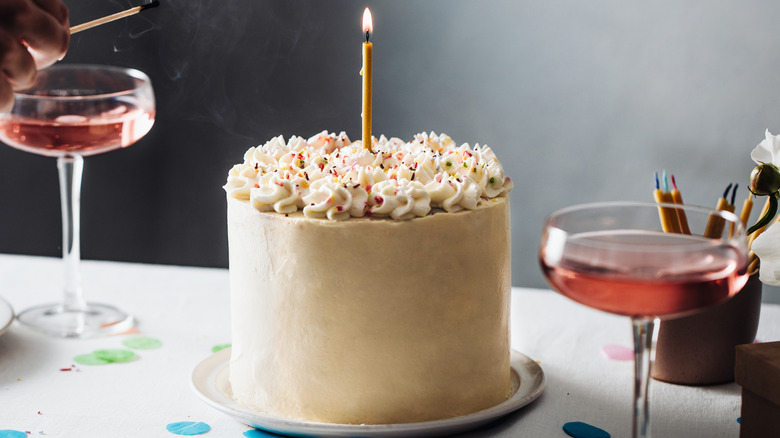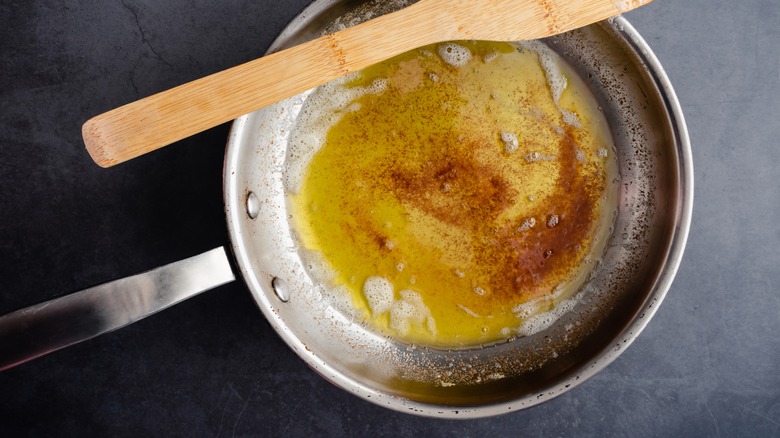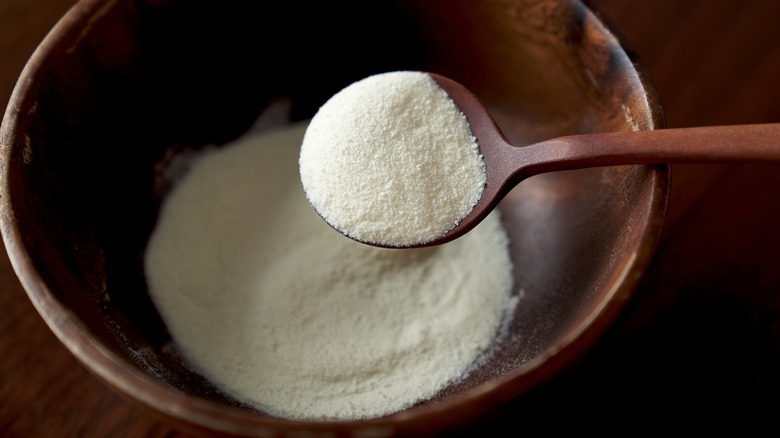Take Your Buttercream To The Next Level With Toasted Milk Powder
Buttercream frosting is already great with its innate rich, creamy sweetness, but brown butter makes it even better. That's just an irrefutable fact. So what could be better than brown butter buttercream? Amping up how much brown butter flavor there is in your brown butter. Adding toasted milk powder to buttercream is an easy boost that gives the frosting a warm, nutty, toasted depth of flavor and will make your next cake or batch of cupcakes out of this world.
Milk solids are what fall out of suspension in melted butter, they're the bits that toast in the skillet during browning. Standard U.S. butter usually has only 1% milk solids, but you can increase the amount of milk solids by adding milk powder. If brown butter gets its flavor from just 1% milk solids, imagine how flavorful it could be by increasing that percentage. The more toasted milk solids there are, the more flavor there is in your browned butter. The more flavor there is in your browned butter, the more flavor there is in your buttercream. In this case, more really is more.
Which method should you use?
Milk powder can be toasted dry or added to melted butter as it's browning; each method has its advantages and disadvantages, but either will add a lot of flavor. Dry toasting milk powder can be done in a skillet or in the oven at 300 degrees Fahrenheit for 10 to 20 minutes. The benefit of toasting milk powder in the oven is you can make a really big batch and save it for later.
You may need extra equipment as dry-toasting milk powder can make it clump, and you'll need to blitz it in a food processor or blender to return it to a fine powder and get a smooth buttercream. Baker and cookbook author Edd Kimber told King Arthur Flour that non-fat milk powder is the best choice for storing it toasted. Having toasted milk powder ready to go means that any buttercream can be brown butter buttercream simply by sprinkling some in as you whip up a batch.
If you're looking for a really strong brown butter flavor, it's worth browning the butter together with the milk powder. Just add up to ¼ cup milk powder per stick of butter, and you're boosting flavor in a big way. Lydia Fournier of the King Arthur Flour test kitchen found that whole-fat milk powder is the best to use for big flavor. You'll need to allow your browned butter to return to a softened, room-temperature state. If it's too liquid and warm, it won't whip into buttercream properly.
Why and how does this work?
The process of browning butter is one full of chemistry. Butter is an emulsion; water molecules are enveloped in fat and milk solids. When butter melts, the suspension is broken and all of these components separate. The milk solids fall to the bottom of the pan and the butter froths as the water cooks off out of the butter oil. Once the water is gone, the butter can heat to over 212 degrees Fahrenheit and reach the appropriate temperature for the Maillard reaction. This is a chemical reaction between heat, amino proteins, and natural sugars in the milk solids that creates the toasty goodness that is brown butter.
Powdered milk is basically just the milk solids without the water and butter oil. Heating the powder creates the same Maillard reaction but in a dry environment. You can toast it and use it in cooking or baking almost like a spice, adding that browned butter flavor without adding butter. It allows you to adjust the flavor without disrupting the balanced fat content in a recipe.
Buttercream has to be a balanced, specific ratio of butter to sugar to keep the frosting from being either too greasy or too stiff and grainy. Adding toasted milk powder to buttercream concentrates the brown butter flavor without disrupting the ratio. It's worth noting that as an absorptive solid, you may need to adjust your favorite American buttercream recipe with another splash of liquid milk.


